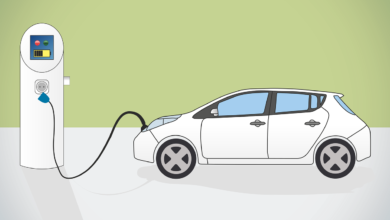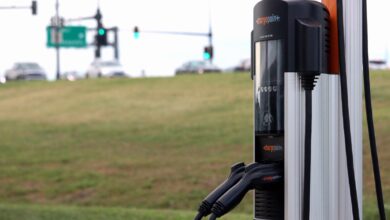Consumers have a lower intent to buy electric vehicles than in the last three years

Emanuel M Schwermer
Consumer demand for electric vehicles has cooled off in the U.S. since a year ago. Not only have recent sales and deliveries reports from electric vehicle makers disappointed based on prior expectations, but there is also some indication that EV sales growth rates may stay subdued even as overall EV market share pushes higher.
For the first time in the J.D. Power U.S. Electric Vehicle Consideration Study released, a measure of new-vehicle buyer consideration has dropped from the previous year. J.D. Power said this year’s study revealed that 24% of shoppers say they are “very likely” to consider purchasing an EV, down from 26% a year ago, while the percentage of shoppers who say they are “overall likely” to consider purchasing an EV decreases to 58% from 61% in 2023. “As the industry inches toward mass consumer adoption, the main roadblocks to getting consumers behind the wheel of an EV are the continued shortage of affordable vehicles, charging concerns, and a lack of knowledge regarding the EV ownership proposition, including incentives,” noted Stewart Stropp, executive director of EV intelligence at J.D. Power.
“As understanding of EV incentives rises, so does the likelihood of consideration. However, approximately 40% of shoppers say they do not have a solid understanding of such incentives. Prioritizing initiatives and efforts to educate consumers about the EV proposition—including available incentives and how they work—is vital to accelerating market growth.”
Other factors said to be contributing to waning EV demand include a lack of charging station availability; lower year-over-year fuel prices; stubborn inflation and high interest rates; and underwhelming growth in model availability. Notably, several automakers have deferred EV model launches, and some production plans have shifted more toward hybrids and plug-in hybrids. The J.D. Power survey also revealed that without a second vehicle, shoppers tend to be more critical of the logistics related to EV ownership.
Crucially, EV makers could face less demand than anticipated from Generation Z (born between 1997 and 2012) and Millennials/Generation Y (born between 1981 and 1996) shoppers in particular. While 24% of Gen Z and 32% of Gen Y shoppers say they are “very likely” to consider an EV, those marks both fell from a year ago due largely to a lack of affordable vehicles for the two younger buyer cohorts.
The list of auto-related stocks that have fallen the most over the last 52 weeks include EV names such as Faraday Future Intelligent Electric (FFIE) -97%, Chijet Motor(CJET) -94%, Canoo (GOEV) -82%, Workhorse Group (WKHS) -76%, Luminar Technologies (LAZR) -74%, Polestar Automotive (PSNY) -65%, Lucid Group (LCID) -60%, Cenntro (CENN) -45%, NIO (NYSE:NIO) -34%, Kandi Technologies (KNDI) -33%, Rivian Automotive (RIVN) -23%, and XPeng (XPEV) -14%. Meanwhile, Tesla (NASDAQ:TSLA) has poked out a gain of almost 2% over the last year. However, that return for the EV juggernaut is short of the performance of legacy auto stocks such as Toyota Motor (TM) +55%, Ferrari (RACE) +44%, General Motors (NYSE:GM) +41%, Stellantis (STLA) +40%, Honda Motor (HMC) +18%, and Ford Motor (NYSE:F) +8% over the same time period.



